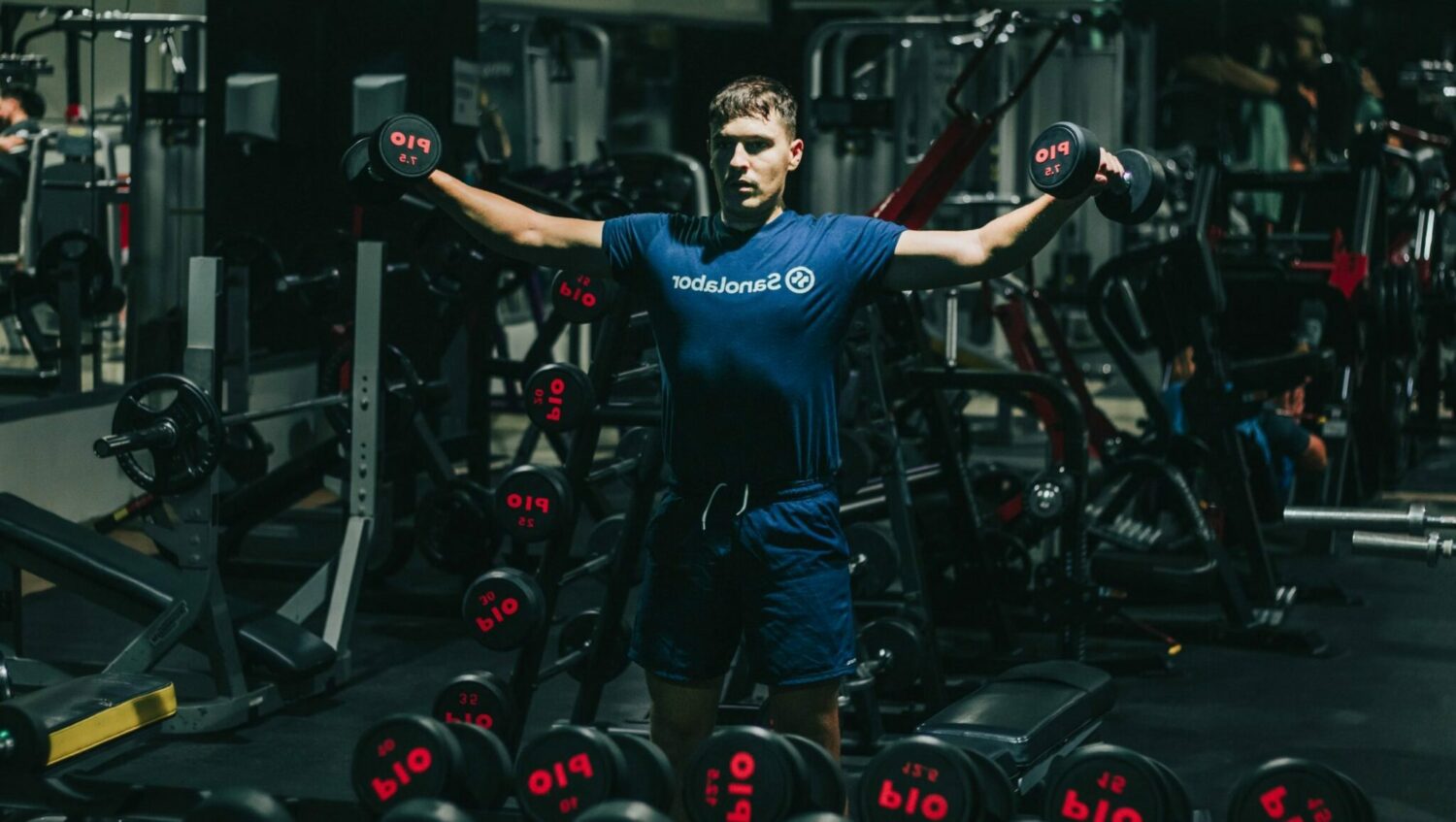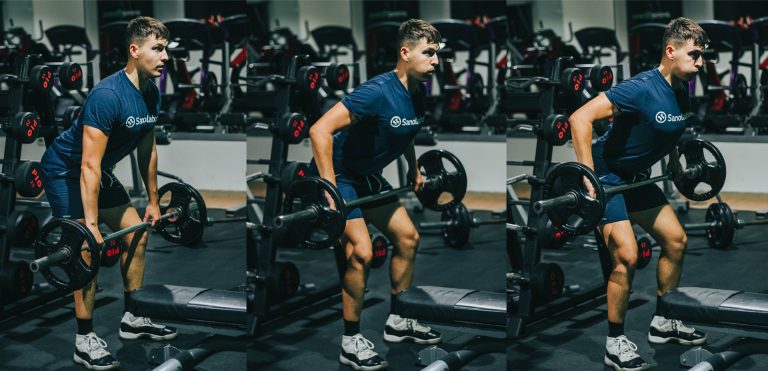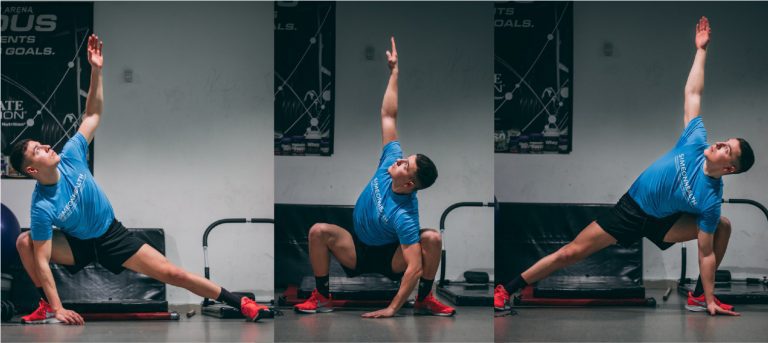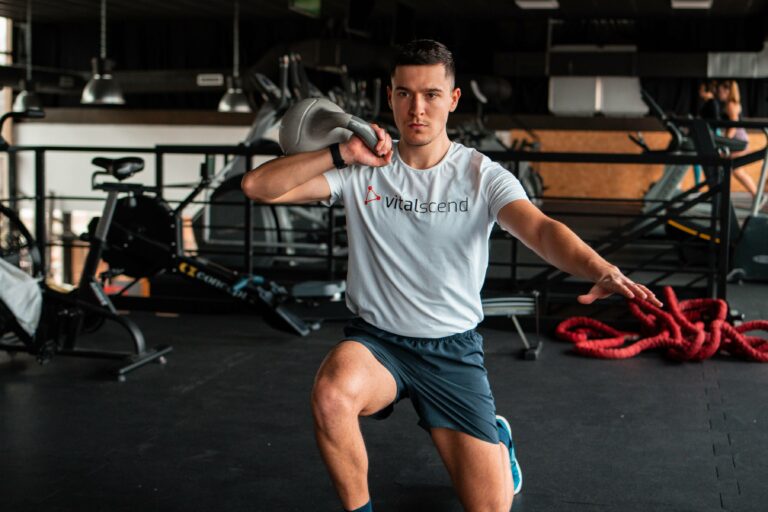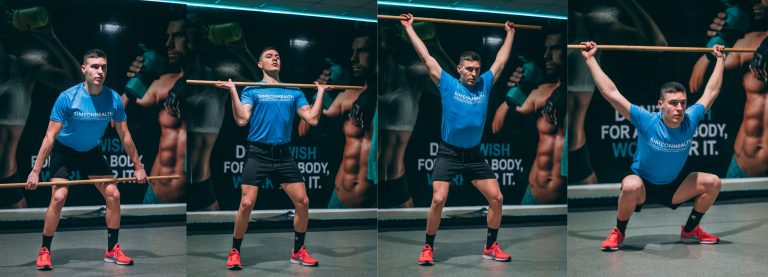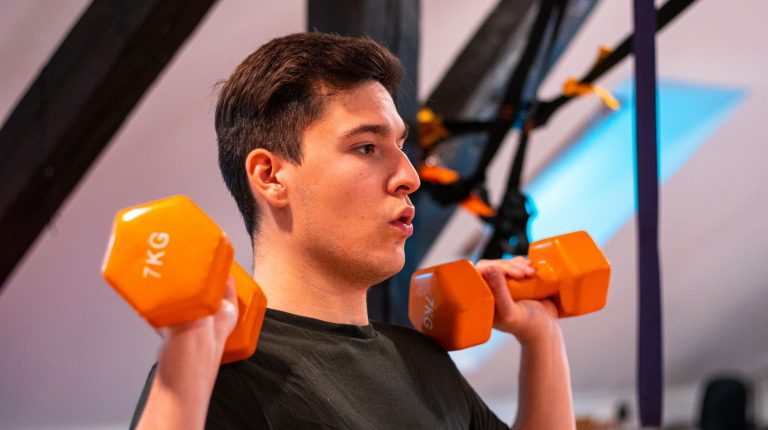Strength vs Power vs Hypertrophy | Discover the Difference
In recent years the term “strength training” has grown in popularity so fast, that now it’s so mainstream term used for anything related to bodyweight training or weightlifting.
So, from a Kinesiology perspective, we wanted to clear things out. Generally, strength is what we think of as a skill or an adaptation that makes us stronger, referring to the improved ability of our bodies to lift greater loads.
However, there is a distinct difference in the professional world of progressive training, when comparing the three.
5 Core Principles For Efficient Training
To really understand the difference between all three, you need to first understand these five principles for efficient training structuring.
1. Prioritize Structured Training Program
Training intuitively can be a great thing, if you are a professional educated lifter or strength coach. But for most people, random training can not bring the desired effects in a fast and efficient manner, due to a lack of knowledge. Although change might be present with any sort of training, for a solid, sustainable, and effective change to occur, we need some knowledge and training structure.
2. Synchronize Your Goals with Your Training
What is your main goal? Why do you train? These two questions will determine the structure of your workouts. We should aim to synchronize our training with our goals, while at the same time individualizing it and reevaluating our adaptation. If you train for Mass, you should lift with higher volume and frequency, lower speed and load, and rest less. If you’re training for strength, you need fewer reps, a higher load, and more rest time.
3. Key Differences in Training Structure
From the type of contractions, the number of sets and reps, to frequency, volume, and rest time, there are so many factors to take into consideration before starting to structure your training. This is all tied to the type of adaptation where progress happens, and it is so different for each of the three.
Hypertrophy relies on tearing the muscle down with high volume, and requires more protein and optimal recovery. Strength and Power are more on the side of neurological adaptation, being able to recruit more muscle fibers – larger motor units, faster.
4. Interpolar Relationship
Although we like to specifically pin out what we are training for, one thing is sure. You can never just train for hypertrophy, and not get stronger. You cannot just train for strength and build no muscle. Whichever you choose to train, it will add up to the next one. So, if I train to build muscle, I will also become a bit stronger, but the main focus is muscle growth. If I train for strength, aka being able to lift more weight, I will also build some muscle. But the idea is, which one is our dominant focus, Power, Strength, or Hypertrophy?
5. Muscle Dominant vs. Weight Dominant Focus
The main difference in training for hypertrophy and strength/power is where the main focus goes. If you want to build muscle, you want to tear the muscle down and feel the burn from lactic acid building up, which is muscle dominant.
If you train for strength, you want to find the most efficient way to properly lift that weight, without caring how much you’re activating each muscle, it is more of a whole-body thing. In strength, you are more concerned about the load, while hypertrophy can be done with lower loads at the end of a workout when the muscle is already tired.
Strength vs. Power vs. Hypertrophy | The Short Answer
If you’re wondering what’s the difference, here is the short answer. Hypertrophy is building muscle, so the main goal is to increase muscle mass. Strength is the ability to lift higher loads from A to B, which requires neural adaptation. Power is more similar to strength, but takes time into the equation, allowing the body to lift weight faster, with a primary focus on speed.
conclusion
Hypertrophy training is primarily focused on growing the muscle. The end goal is an increase in muscle mass. Hypertrophy training involves both compound and isolation exercises. For optimal growth, aim for higher volume, and higher frequency at 65-85% of RM. Reps are at 8-12, sets 3-5, and exercises 5-10. Also, keep shorter rest periods (60-90 sec), as the primary goal is to tear the muscle down.

What Is Hypertrophy
Hypertrophy is muscular growth achieved through exercises, often resistance training. When we are producing force with our muscles, pushing against resistance, we tear the muscle down. These micro tears result in acute inflammation, which after sufficient recovery can lead to increased size and number of contractile proteins.
This in turn increases the cross-sectional area of the trained muscles, which is referred to as “building muscle”. The muscle fibers and proteins become bigger in size, which consequentially increases the muscle’s ability to produce force.
How to Train for Hypertrophy
Training for hypertrophy differs quite a lot from strength or power training. While we can achieve muscle gains with compound exercises, hypertrophy requires such a high volume of exercise, that only compound work will drain the nervous system quickly. So, this is where isolation exercises come into place.
Volume and Frequency
Hypertrophy requires higher volume and frequency, which means to grow in muscle size you will need to train 5-6 days per week. The best practice is to separate bigger muscle groups into three groups and train each group twice a week. So, we have the Push muscles (chest, triceps, shoulders), Pull Muscles (rear shoulder, deltoid, lower and upper back), and Legs (quadriceps, hamstring, gluteus, calves).
Type of Contractions
The contractions should be done in a slower and more controlled manner, where you are completely focused on activating the muscle that’s working. Try a 2/2 or 3/2 tempo. This means 2 seconds of concentric contraction and 2/3 eccentric contraction.
Load, Reps, and Sets
For optimal hypertrophy, we should aim at a load of 65-85% of our Maximum (RM). So if you can lift 100kg on Bench Press, you should aim at 65-85 kg for chest hypertrophy. Lower weight allows for more muscle work and less neural work. For Size, you’ll aim at around 8-12 reps, 3-5 sets per exercise. In total, you should aim at around 5-10 exercises, which will come to around 15-30 sets if you do 3 sets for each.
Rest and Recovery
The rest between sets should be around 60-90 seconds. For proper hypertrophy, you do not let the muscle rest a lot. The point is to build up enough lactic acid, to increase intramuscular pressure and tear the muscle fibers down. You can take up to 2-minute breaks when switching between exercises. On the other hand, hypertrophy requires a better recovery protocol, as it is the most extreme on the catabolic-anabolic spectrum of all other types. This means more protein, more water, optimized sleep, foam rolling, and more.
Compound vs. Isolation
When training to grow in muscle size, the ratio of compound to Isolation exercise should be around 50/50. While lifting for strength or power will include mostly compound or full-body exercises, working for muscle growth requires tearing the muscle down more, and the most efficient way for this is isolation.
But, because compound weightlifting offers so many benefits, increases overall testosterone, speeds up metabolism and fat loss, increases full-body strength, and many more, it is the best way to start the practice. So starting each workout with compound exercises would be great until the muscles become tired, then you can switch to isolation.
Diet & Sleep
For optimal muscle growth, recovery is crucial. Hypertrophy is the one type of training that requires more focus on diet, supplementation, and sleep than the training itself. This means a diet high in protein, healthy fats, and complex carbohydrates.
Protein should be kept at 1.6-2.2 grams per kg of body weight. Nightly casein, simple carbs after a workout and frequent meals are some of the tricks that can help your body to keep protein synthesis at a higher level.
Muscle dominant focus
The most efficient way to grow muscle mass is to put the muscle first and the weight second. This means you are primarily focused on muscle contractions, proper lifting, and muscle engagement, rather than lifting more weight. Sometimes when the muscle is tired, you’d rather have a lower load and indulge the muscle in isolation exercises for longer, as long as you feel the burn.
Conclusion
Hypertrophy training is primarily focused on growing the muscle. The end goal is an increase in muscle mass. Hypertrophy training involves both compound and isolation exercises. For optimal growth, aim for higher volume, and higher frequency at 65-85% of RM. Reps are at 8-12, sets 3-5, and exercises 5-10. Also, keep shorter rest periods (60-90 sec), as the primary goal is to tear the muscle down.
Hypertrophy Training Example
- Monday: (Push) Bench Press, Overhead Press, Triceps Extensions, Biceps Curls, Chest Flyes, and Dumbbell Lateral Raise
- Tuesday: (Pull) Weighted Pull-up, Bent Over Row, Lat Pull-Down, T-Bar Row, Rack Pulls
- Wednesday: (Legs) Squats, Romanian Deadlift, Hip Thrust, Kettlebell Lunges, Calf-Raise, and Leg Extensions
- Thursday: (Push) Bench Press, Overhead Press, Close Grip Push-ups, Triceps Kickbacks RL, Arnold Press, Weighted Dips, and Cable Flyes
- Friday: (Pull) Weighted Pull-up, Bent Over Row, Romanian Deadlift, Straight Arm Pulldown, Face Pulls, and Close-Grip Lat Pulldown
- Saturday: (Legs) Squats, Bose Ball Bridges, Hip Thrusters, Leg Extension, Hamstring Curls, Standing Hip Extension, Calf Raises, and Kettlebell RL Lunge
- Sunday: Rest & Recover
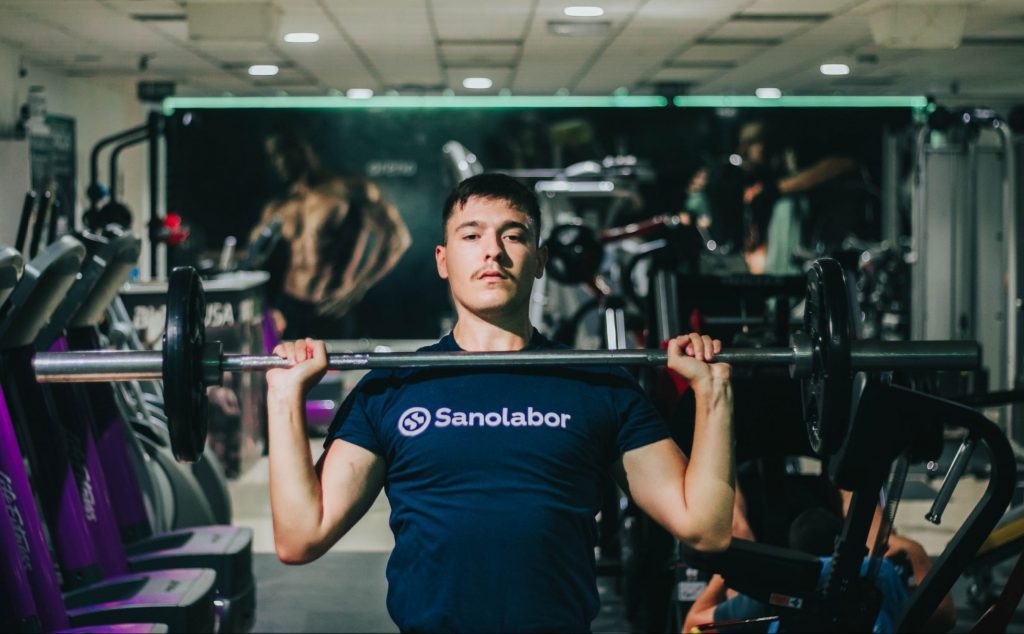
What is Strength?
Strength is the ability to produce force against external resistance. The more load we can push in a given exercise, the stronger we are. Strength is more of a whole-body thing than a one-muscle thing. For optimal strength, we need to work our body as a whole, best done through training with compound exercises.
How to Train for Strength?
To keep it clear, “strength training” as a term is used for all types of weightlifting. So we’ll call it training for strength here. Training for strength differs from training for size. For an individual to become stronger, heavy weightlifting with longer rests, lower volume, and lower frequency is crucial.
Strength gains are different from Muscle Gains, mainly because hypertrophy is primarily anatomical change while becoming stronger has a lot to do with neural adaptation. To lift heavier we need to recruit more muscle fibers and larger motor units. The main goal is the weight lifted, not the overall body aesthetic, hence why strongmen and powerlifters have higher fat percentages and more fast-twitch muscle fibers.
Volume and Frequency
The optimal volume for strength depends on the workouts themselves. For more intense work, two workouts per week might be enough, while regularly 3-4 strength trainings per week are optimal. This is half the frequency you get with hypertrophy training, plus the volume is smaller. While in hypertrophy we can do 10+ exercises, as more of them are isolation and won’t drain our nervous system, in strength training we stick to 3-5 foundational, compound exercises and it will be enough. (2)
But why do we lift with lower frequency, and lower volume on top of that? Wait for it.
Load, Reps, and Sets
Because of the load. When training for strength, we lift heavy. The load should exceed 80% RM if strength is our primary focus. This means we lift heavier loads, and can do fewer reps compared to hypertrophy training. The optimal Rep range is 1-3-5 for strength gains, while sets are kept at 3-5 per exercise. If we lift with 90%+ RM, we aim at 1-3 reps and 3 sets, while lifting between 80-90% RM, we can go up to 5 reps, 3-5 sets per exercise.
Type of Contractions
The type of contractions for strength differs from hypertrophy training. While muscle growth seeks slower eccentric and concentric contractions. Strength doesn’t. The point of strength is to be able to lift heavier loads, and to do this we have to activate our muscles, to exert more force faster. Now as you’ll see later, speed isn’t the main focus in strength, but in power training. However, training for strength seeks higher and faster force output in the concentric part, meaning we air for a tempo of 3/1 or 2/1, eccentric to concentric. The eccentric part is fairly slow and controlled, and we push faster on our way up.
Note
If you are doing 90% RM + loads, the concentric part will require higher and faster force output, but the lift will take more time from A to B, as we need more time to lift the higher load. This means you don’t need to focus on the tempo that much, but on getting the weight from A to B.
Rest and Recovery
This is where it gets interesting. As strength training requires lower volume and frequency, it also benefits from longer rest periods. Between sets, you should rest for 3-5 minutes, to fully recover the nervous system, and your muscles and replenish creatine phosphate back in the muscle.
For the Recovery part, it is clear that you do not need to eat a solid caloric surplus or a lot of protein to maintain strength, as you’d with hypertrophy. You still need a good amount of protein, complex carbohydrates, and healthy fats if you want to keep your muscle size.
Proper hydration, a good night’s sleep, foam rolling, and cold baths are some of the tools you can use to recover. Since strength is more of a neural adaptation, you should look into supplements like B-complex, Magnesium, Calcium, and Potassium.
Muscle Groups and Compound work
Training for strength optimally focuses on 3-5 foundational exercises that incorporate very large muscle groups and recruit more fibers. These include squats, bench press, overhead press, deadlifts, weighted dips, weighted pull-ups, hip thrusts, and bent-over rows.
Two Ways To Train Strength
The first one is the Push-Pull-Legs Protocol. This means you have one push, one pull, and one workout for legs per week.
Here’s a quick example of your exercise schedule – 1st being Push-Pull-Legs, the second being a simpler one which incorporates the main movements, mixed muscle groups.
| Strength Program | (Complex) | Strength Program | Simple (Mixed) |
| Monday (Push): | Bench Press, Overhead Press, Weighted Dips, and Arnold Press | Monday | Bench Press, Weighted Dips, Squats, Trap-Bar Deadlift |
| Wednesday (Pull): | Weighted Pull-ups, Bent-Over Row, Romanian Deadlift, and Close-Grip Lat Pull-Downs | Wednesday | Squats, Lat-Pulldowns, Romanian Deadlift, Overhead Press |
| Friday (Legs): | Squats, Hip Thrusts, Bulgarian Split Squats, and Barbell Calf-Raises | Friday | Incline Bench Press, Front Squat, Hip Thrust, Arnold Press |
conclusion
Training for strength requires lower volume and frequency, is mainly focused on lifting heavier loads from A to B and the main adaptation is neurological. Reps are at 3-5, sets 3-5, and exercises 3-5. Lift heavier, at 80% RM +, with longer rest periods of 3-5 minutes between sets. Compound exercises are in their main focus, to activate large muscle groups and larger motor units.

What Is Power?
Power is the ability to exert maximal force at the highest velocity possible, in a controlled manner. Power is much more related to speed work and explosiveness than the highest load we can lift, our 1 Rep Max which is characteristic of strength.
With Maximal Strength, we are aiming to lift heavier loads over time, with the main goal of recruiting more muscle fibers. With Power though, the neurological adaptations take place even further, with the main goal of producing more force at a higher velocity, which activates the motor units with higher thresholds.
How To Train For Power?
Training for Pure Power can be tricky, as the RM% is not so clear and depends on the type of exercises we do. There is so much more to power in terms of complexity, that one program won’t fit the needs of every individual.
There are so many different workout protocol types that can increase power, from heavy 1-3 reps weightlifting, to speed work, dynamic work, ballistic training, fast reaction training, and so on. Generally, we’ll separate power into two main types.
Lightweight vs Heavyweight Power
Lightweight Power Training incorporates ballistic movements and plyometric training mostly. The load here is 35% RM -, and it can be 0% RM at the lowest. The point is to perform explosive movements using bodyweight or lightweight exercises.
Heavyweight Power Training, on the other hand, is closer to training for strength in terms of load. This method can use loads of 70-80% RM in compound exercises with 1-3 reps per set, or 40-80% RM if you are into the Dynamic Effort Method.
Volume and Frequency
Whether you choose the lighter or heavier power method training, or you do a hybrid type of training, the volume does not change that much. Power is much more individualized in terms of rest and volume. Usually, power is trained after hypertrophy and strength (as a phase), and there is a great logic behind it. Generally 2-4 workouts per week, with 3-6 exercises (heavy) or 6-10 exercises (light) per workout.
The volume of power training is low enough, to still keep our nervous system working properly. This means our work should not drain the nervous system, as power is trained in the pre-competition and during the competition period.
Load, Reps, and Sets
The general rule of thumb for power training is that we should aim for as many reps as we can do with maximal force output at reasonably high velocities. For example, if I am doing a depth jump and I can efficiently do 7 reps fast and strong, and I feel tired on the 8th, I better stop. This training doesn’t require so much volume but requires nervous system activation.
If we train lightweight, so plyometrics or ballistic movements the load is at 0-35% RM, and we shall aim for 6-12 reps, 3-5 sets, and around 6-10 exercises.
If we train heavyweight, the load is 40-80% RM, still lower than maximal strength because only with submaximal loads we can produce higher velocities more effectively. Here, the reps are lower, 1-3-5 reps, 3-5 sets, and 3-6 exercises (lower volume).
Rest and Recovery
Just as in strength training, optimal recovery, especially between sets is the key factor here. Power can only be trained as much as our nervous system allows. This is not pumping the muscle, this is strictly explosive.
So, whether you do box jumps, ball throws, bench press, squat jumps or depth jumps, you should recover for at least 3-5 minutes between sets, to rest and recover the nervous system for the next exercise.
Exercises for Training Power
| Plyometrics | squat jumps, depth jumps, box jumps, pike jumps, speed skater, and power skip |
| Ballistic Movement | medicine ball side/front wall throws, squat jumps, and plyo push-ups |
| Olympic Weightlifting | snatch, clean, jerk, and push press |
| Compound Weightlifting | deadlift, bench press, squat, overhead press, and cable row |
conclusion
Power Training is a more complex type of training with the main goal of producing maximal force in minimal time. So, speed is the key to power, and for this reason, the training method uses lighter (0-35 % RM) or heavier (40-80% RM), but still submaximal loads that one can push with higher velocities. The main gains rely on neural adaptation, and for this training, explosive lifts, longer recovery and less volume are characteristic.
Key Points
Hypertrophy
Strength
Power
Hypertrophy is training for muscle growth. For optimal hypertrophy, we need high volume and frequency, moderate loads, and greater regeneration. Higher amounts of protein, high-quality sleep, and massage. Hypertrophy combined compound and isolation exercises, with the main goal of tearing the muscle down during training.
Strength relies on neural adaptation. It is trained mainly with compound exercises like the squat, bench press, and deadlift. It adapts the nervous system to fire up larger motor units faster and produce maximal force against external resistance. Is trained with lower volume and high loads, and longer rest periods.
Power also relies on neural adaptation. It is about lifting the maximum amount of load in the fastest way possible, in a controlled manner. It uses both light and heavy weights, it can be plyometric, ballistic, and dynamic in nature. Just as strength, it requires longer rest periods and lower volume.
Frequently Asked Questions
How is power different from strength?
Strength is about exerting maximal force to move the weight from one to another position. Power does the same, but incorporates another variable into the equation, which is time. Power is concerned with speed, even if during the lift it doesn’t look fast. Power is about recruiting the largest motor neurons and fast twitch muscles, in a controlled manner.
What is hypertrophy vs. strength training?
Hypertrophy training is the training optimized for muscle growth. It combines isolation exercises dominantly, with high volume and short rest periods of moderate loads weightlifting, with optimal regeneration protocol.
Strength training, in the mainstream media, refers to any strength-related work, which can also include bodyweight training methods that will aid in stability, balance and muscle density. Training for strength on the other hand, is optimized training protocol made to improve pure strength, which is our maximal force output in a given exercise. It combines heavy weightlifting, longer rest periods, lower volume and compound exercises.
What happens to my muscle during strength vs hypertrophy?
During hypertrophy training the goal is to tear the muscle down, easily done by lifting with high volume and moderate load. The eccentric part is more important in hypertrophy training, as that’s where we can cause most microtears which will later on, result in hypertrophy.
In strength training, we aim to teach the nervous system to activate large motor neurons, large, white and fast twitch muscle and exert the maximal force output. The muscles aren’t as injured nor inflamed, as they are in hypertrophy, but the nervous system is tired from firing.
Which one I should train for first, strength or hypertrophy?
Hypertrophy always comes first. The reason why is, hypertrophy partially destroys the muscle by ripping muscle fibers, causing microtears in them. This acutely increases inflammation and stimulates muscle growth. After muscle growth, strength comes second. Strength teaches this freshly-built muscles to actually perform and exert more force, which is much more efficient after they’ve grown. For experienced lifters however, cycles of hypertrophy then strength-focused training work best.

